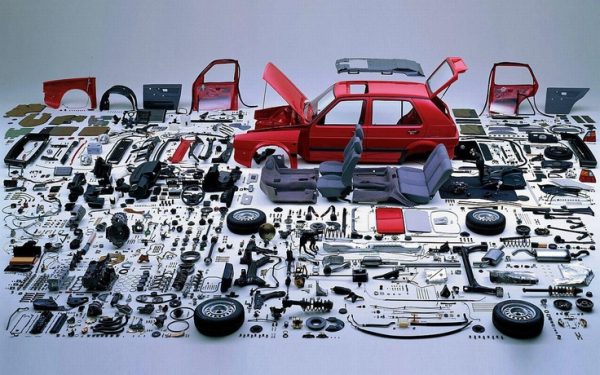The use of polymers in the manufacturing of automotive parts has simplified both the design and production processes, while significantly enhancing the final quality of the product. Manufacturers aim for lightweight materials, flexibility in shaping, and resistance to environmental conditions when designing the exterior parts of a vehicle. Polymeric materials such as Noryl GTX, thermoplastic elastomers (TPO), polycarbonates (PC), and PP-based compounds have helped us produce high-quality bumpers, body panels, and exterior trims.
For instance, Ford introduced the first plastic bumper using a PC/PBT alloy, which was not only lighter but also highly resistant to impact and chemical exposure. These features contributed to the widespread adoption of such materials among automakers worldwide.
Application of Polymers in Interior Car Components
Inside the car, we focus on aesthetics, abrasion resistance, colorability, and comfort. Polymers such as ABS, PC/ABS alloys, and polyolefin foams allow us to design dashboards, mirror housings, seat covers, and decorative trims with features like a wide range of colors, high impact resistance, and suitable thermal stability.
For example, polypropylene (PP) is one of the most commonly used polymers in interior automotive components due to its high recyclability and ease of processing.
Application of Polymers in Engine Components
Even in the heart of the car—the engine—engineering polymers are widely used. Glass fiber-reinforced polyamides, PEEK, and fluoroplastics are among the materials applied in fuel systems, engine housings, gaskets, and piston rings.
Using these materials not only reduces engine weight but also significantly enhances resistance to high temperatures, chemicals, and wear. This plays a crucial role in improving the durability and performance of the engine.
The Future of Polymers in Automotive Design
Looking ahead, we can see a growing trend toward the use of polymers, driven by advancements in technology, environmental regulations, and economic factors. Advanced PP compounds, new molding technologies like honeycomb structures, and fiber-reinforced composites are shaping the future of vehicle manufacturing.
Engineering polymers have not only replaced metals in many applications, but their recyclability has also empowered us to move toward more sustainable automotive production.
Benefits of Using Polymers in Automobiles
| Benefit | Description |
|---|---|
| Weight Reduction | Replacing heavy metals with lightweight polymers significantly reduces vehicle mass. |
| Fuel Efficiency | Lighter cars consume less fuel and improve overall engine performance. |
| Improved Aerodynamics | Flexible materials enable sleeker designs that reduce air resistance. |
| Enhanced Aesthetics | Wide color and texture options make for more visually appealing interiors and exteriors. |
| Chemical & Thermal Resistance | Polymers withstand harsh conditions like heat, oil, and fuel. |
| Recyclability | Many polymers can be recycled and reused in production, lowering environmental impact. |
Common Polymers in Automotive Applications
| Polymer Type | Key Properties | Automotive Applications |
|---|---|---|
| PP (Polypropylene) | Lightweight, recyclable, cost-effective | Bumpers, dashboards, seat backs |
| PA (Polyamide/Nylon) | Heat and impact resistant | Gear knobs, fuel systems |
| ABS | Impact-resistant, colorable | Interior panels, mirrors, dashboards |
| PC (Polycarbonate) | Transparent, tough, heat-resistant | Headlamp lenses, windshields, bumpers |
| TPO | Soft, scratch-resistant | Exterior trim, body parts |
| PEEK | Extremely heat-resistant | Engine heads, connectors |
| PBT & PET | Dimensionally stable, electrically resistant | Electrical components |
| PTFE (Teflon) | Low friction, chemical resistant | Gaskets, piston rings |
| PVC | Cheap, insulating | Interior trims, door panels |
Conclusion
In the automotive industry, our use of polymers has revolutionized the way we design, build, and experience vehicles. From lighter weight and improved fuel efficiency to aesthetic variety and environmental benefits, polymers have become a core pillar in modern car manufacturing.
As technology evolves and the need for sustainable, energy-efficient vehicles grows, it’s clear that polymers will continue to play an even more significant role in shaping the future of transportation. The vehicles of tomorrow will not only be lighter but smarter, greener, and more refined — and polymers will be driving that change.




